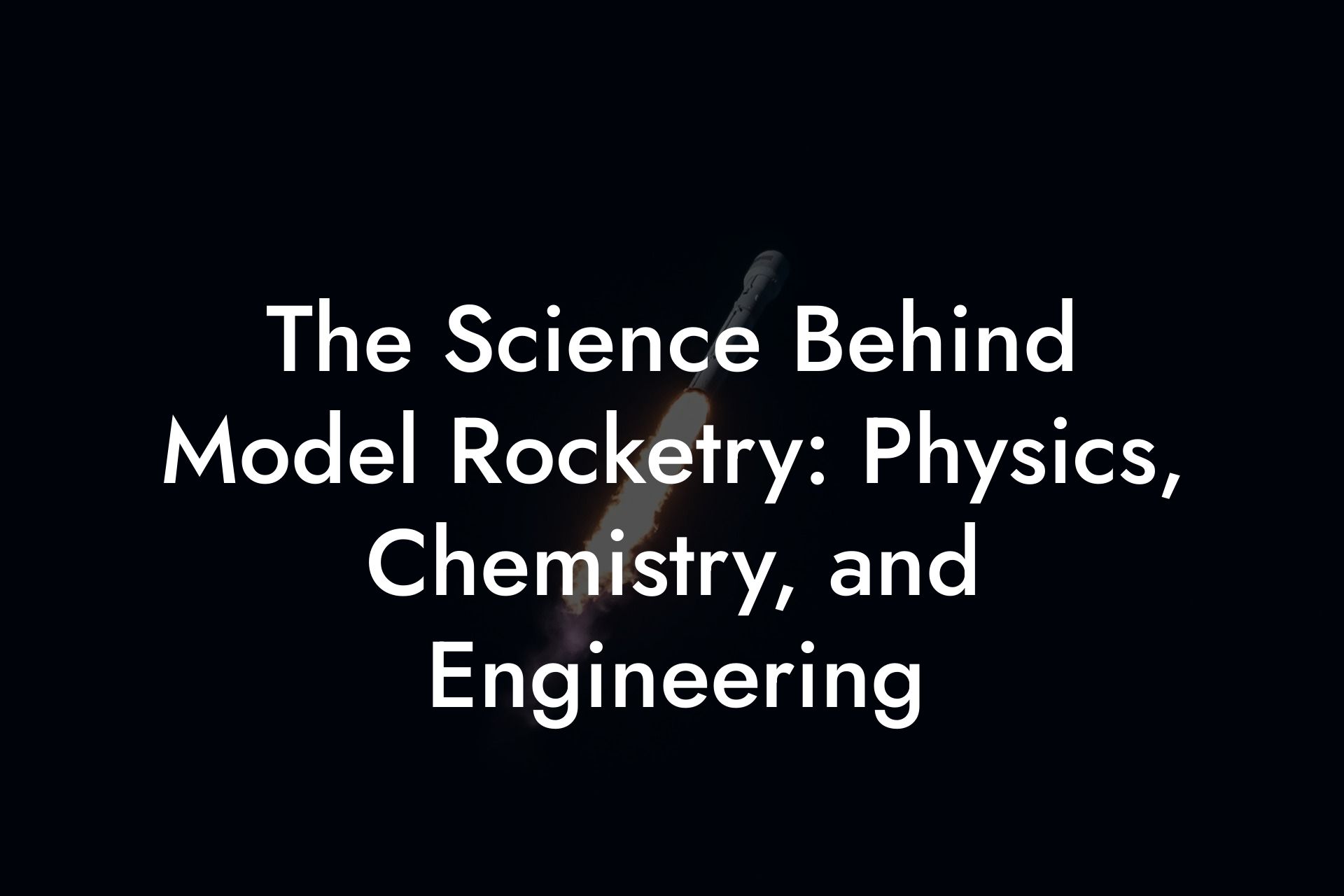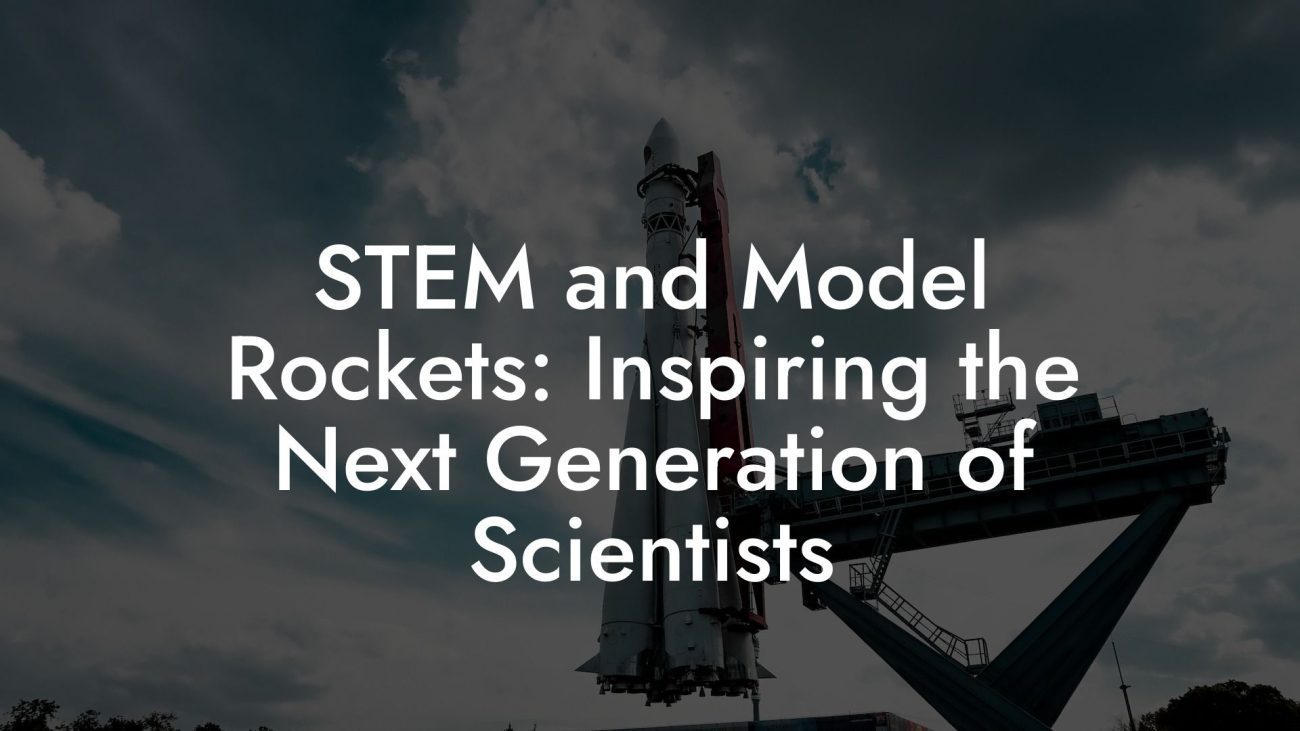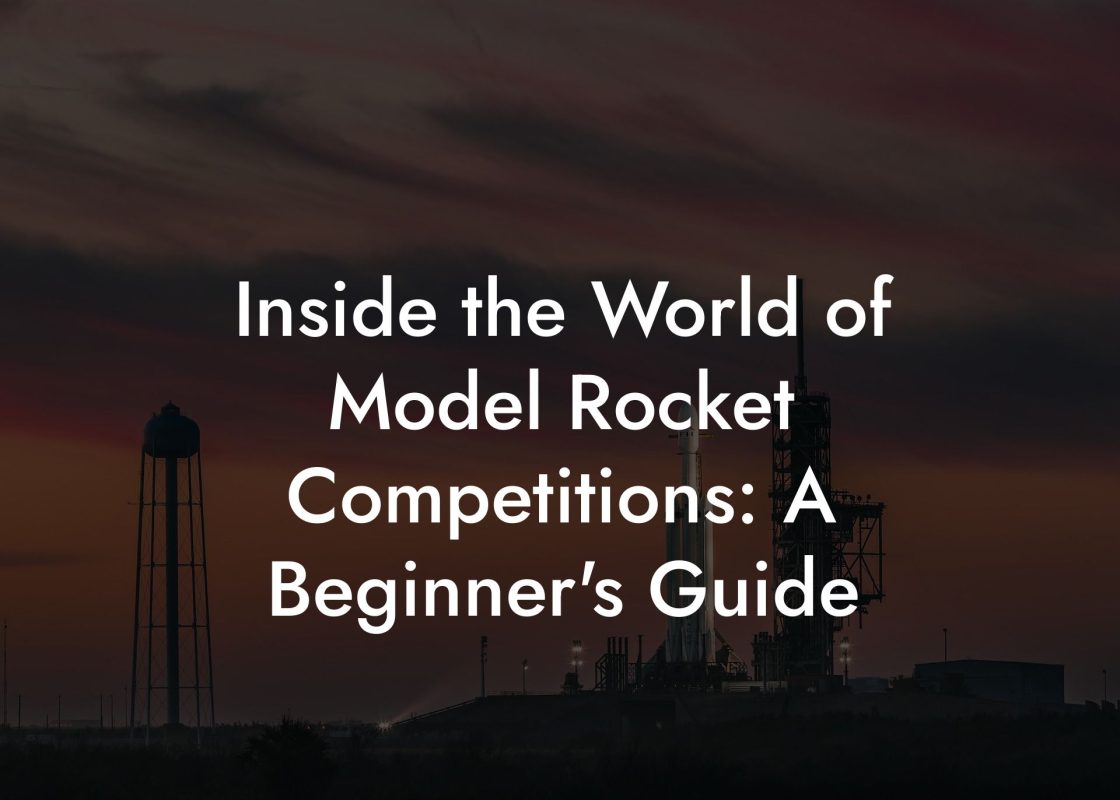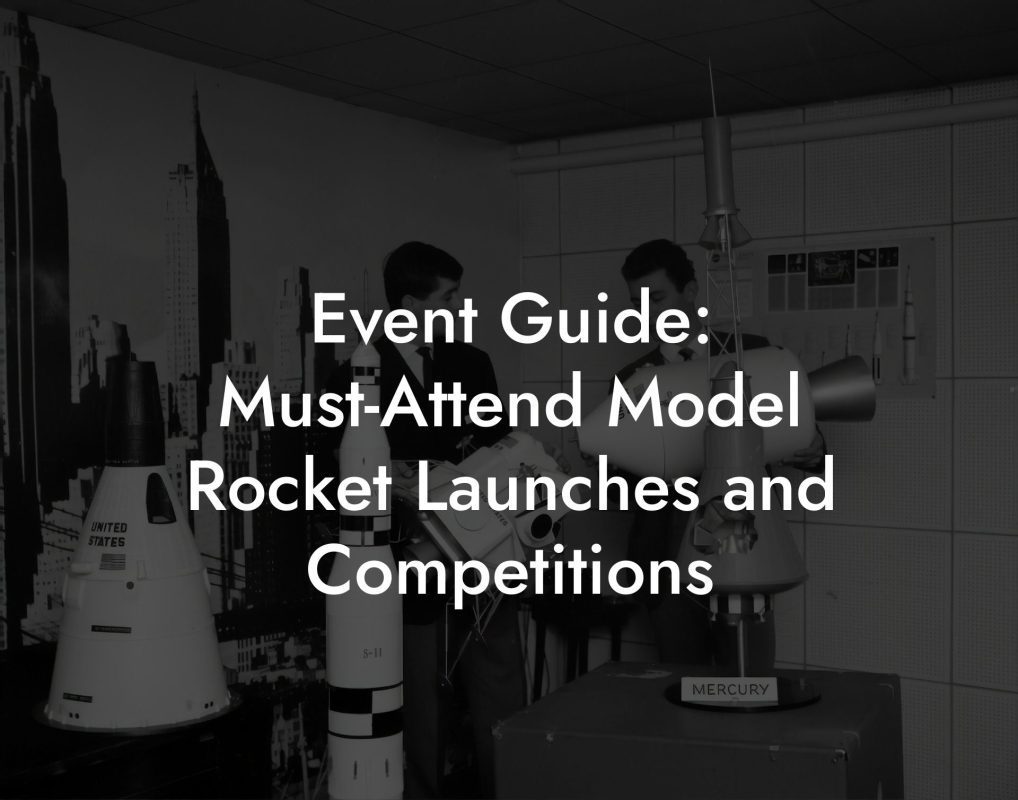Model rocketry is more than just a hobby, it’s a fascinating interplay of physics, chemistry, and engineering that transforms raw scientific principles into awe-inspiring flights. "The Science Behind Model Rocketry: Physics, Chemistry, and Engineering" takes you on an in-depth journey through the core concepts that power every launch. Whether you’re a curious beginner or an advanced enthusiast, this guide will help you understand the scientific foundations that make rockets soar, the chemical reactions that generate thrust, and the engineering marvels that bring it all together.
Quick Links to Useful Sections
- Introduction: Where Science Meets the Sky
- The Physics of Model Rocketry
- Newton’s Laws of Motion
- Aerodynamics and Drag
- Thrust, Impulse, and Burn Time
- The Chemistry of Rocket Propellants
- Chemical Reactions and Combustion
- Fuel Formulations and Performance
- Engineering: Designing and Building the Rocket
- Structural Design and Material Selection
- Engine Integration and Mounting
- Recovery System Engineering
- Digital Integration and Control Systems
- Case Studies: From Concept to Launch
- The Altitude Achiever
- The Stable Flyer
- The Recovery Innovator
- Your Journey Forward: The Future of Data-Driven Rocketry
- Model Rocket Analytics FAQs
- Your Next Launch: Harness the Power of Data and Elevate Your Rocketry
Introduction: Where Science Meets the Sky
At first glance, a model rocket may seem like a simple paper or plastic tube with fins and a nose cone. However, beneath its unassuming exterior lies a complex blend of scientific principles and technological ingenuity. From the moment you ignite the engine, a symphony of physics, chemistry, and engineering takes place, converting stored energy into the kinetic force that defies gravity.
In this guide, we explore how Newton’s laws of motion, chemical reactions, and precise engineering design converge to create the breathtaking spectacle of a rocket launch. We’ll break down the science behind each component, explain how these principles work together, and reveal how even minor tweaks can dramatically enhance performance. Get ready to dive into the world of model rocketry, where every launch is a practical lesson in the wonders of science.
The Physics of Model Rocketry
Physics is at the heart of rocketry. The movement of your rocket from the launch pad to the edge of space is governed by a series of fundamental laws and principles.
Newton’s Laws of Motion
The very foundation of rocket flight is built on Sir Isaac Newton’s three laws of motion:
Looking For The Best Model Rocket Kits? You'll Love These:
- First Law (Law of Inertia): An object at rest stays at rest, and an object in motion stays in motion, unless acted upon by an external force. This means your rocket will not move until a force (thrust) is applied.
- Second Law (F=ma): The acceleration of an object depends on the net force acting upon it and its mass. In rocketry, a powerful engine (force) acting on a lightweight rocket (mass) results in high acceleration.
- Third Law (Action-Reaction): For every action, there is an equal and opposite reaction. The engine expels exhaust gases at high speed, and in return, the rocket is propelled in the opposite direction.
These laws explain everything from the initial ignition to the rocket’s ultimate trajectory. By understanding these principles, rocketeers can optimize engine performance, reduce unnecessary weight, and ensure that every component contributes to a balanced, efficient flight.
Aerodynamics and Drag
Aerodynamics plays a crucial role in determining how smoothly your rocket flies through the atmosphere. Key aerodynamic factors include:
- Drag: The resistance your rocket encounters as it moves through air. Minimizing drag through streamlined design, smooth surfaces, and proper fin alignment is essential for maximizing altitude and stability.
- Lift and Stability: Although model rockets don’t generate lift in the traditional sense, the design of fins and the rocket’s center of gravity contribute to its stability during flight.
- Reynolds Number: A dimensionless value that helps predict flow patterns around the rocket. It guides designers in choosing the right surface textures and shapes to minimize turbulence.
Engineers use wind tunnel testing and computational fluid dynamics (CFD) simulations to model these aerodynamic forces, allowing for iterative improvements in design that can make the difference between a mediocre flight and a record-breaking ascent.
Thrust, Impulse, and Burn Time
Thrust is the force produced by the rocket’s engine, and impulse is the total momentum change delivered during the engine’s burn. Burn time is the duration for which the engine produces thrust. These parameters determine how quickly the rocket accelerates and the altitude it can reach.
By analyzing thrust curves and burn profiles, rocketeers can adjust fuel formulations, engine designs, and even fin configurations to maximize performance. A well-matched engine and rocket design ensure that the thrust is effectively translated into upward momentum without causing instability.
The Chemistry of Rocket Propellants
Chemistry is the engine behind the engine. The process of combustion, where fuel and oxidizer react to produce high-temperature, high-pressure gases, is what propels a rocket. Understanding the chemistry behind rocket propellants is essential for designing engines that are both powerful and safe.
Chemical Reactions and Combustion
At the core of every rocket engine is a chemical reaction that releases energy. In model rocketry, the most common propellant is a composite solid fuel that includes:
- Oxidizers: Chemicals that supply the oxygen necessary for combustion (e.g., ammonium perchlorate).
- Fuels: Substances that burn to release energy (e.g., powdered aluminum or sugar-based compounds).
- Binders: Materials that hold the fuel and oxidizer together, which can also act as additional fuel (e.g., hydroxyl-terminated polybutadiene or HTPB).
When ignited, these components undergo an exothermic reaction, rapidly converting stored chemical energy into heat and kinetic energy. This process produces hot gases that expand and are expelled through the rocket’s nozzle, generating thrust. The efficiency of this process depends on the precise balance of ingredients and the design of the combustion chamber.
Fuel Formulations and Performance
The performance of a rocket engine is heavily influenced by its fuel formulation. Even small changes in the oxidizer-to-fuel ratio can have significant effects on burn rate, impulse, and temperature. Advanced rocketeers experiment with different formulations to achieve the desired performance characteristics:
- High-Thrust Formulations: Designed to deliver a powerful, rapid burst of energy for quick acceleration.
- Long-Burn Formulations: Aim for sustained thrust over a longer period, ideal for achieving high altitudes.
- Eco-Friendly Alternatives: Newer formulations focus on reducing toxic emissions while still delivering reliable performance.
Through careful testing and analysis, you can determine the optimal formulation for your rocket’s specific design and mission profile.
Engineering: Designing and Building the Rocket
Engineering in model rocketry encompasses everything from structural design and material selection to the integration of engines, recovery systems, and digital tools. It is the art of turning scientific principles into a physical craft that can defy gravity.
Structural Design and Material Selection
The structure of your rocket must be strong enough to withstand the forces of launch, yet light enough to maximize altitude. Engineers consider:
- Material Strength: Using advanced materials like carbon fiber, fiberglass, or reinforced plastics to ensure durability and low weight.
- Weight Distribution: Maintaining a balanced center of gravity is crucial for stability during flight.
- Modular Design: Incorporating interchangeable components that allow for easy upgrades, repairs, and customization.
Through iterative testing and simulation, rocketeers optimize the structural design to achieve both safety and performance.
Engine Integration and Mounting
The engine is the powerhouse of your rocket, and its integration requires precision engineering. A secure engine mount ensures that the thrust is efficiently transferred to the rocket’s body without causing structural failure. Factors to consider include:
- Alignment: Ensuring that the engine is perfectly aligned with the rocket’s centerline for optimal thrust direction.
- Vibration Dampening: Incorporating materials or design features that absorb and mitigate vibrations during the high-stress launch phase.
- Heat Management: Designing the engine mount to withstand and dissipate the high temperatures generated during combustion.
A well-engineered engine mount is essential for reliable performance and longevity of your rocket.
Recovery System Engineering
Recovery systems are a critical part of rocket design, ensuring that your rocket can be safely retrieved and reused. Engineering an effective recovery system involves:
- Timing and Deployment: Designing ejection mechanisms that deploy recovery devices (parachutes or streamers) at the optimal moment for a gentle descent.
- Aerodynamic Considerations: Ensuring that the recovery system does not adversely affect the rocket’s flight profile or stability.
- Durability and Reliability: Using robust materials and precise engineering to create a recovery system that performs consistently over multiple launches.
By carefully balancing these factors, you can design a recovery system that not only protects your rocket but also enhances its overall performance.
Digital Integration and Control Systems
Modern rocketry often incorporates digital tools for both design and in-flight monitoring. Engineers use digital control systems to:
- Monitor Flight Data: Real-time telemetry provides insights into acceleration, altitude, and engine performance, which are critical for post-flight analysis.
- Optimize Launch Parameters: Digital controllers can automate the launch sequence, ensuring precise ignition timing and recovery deployment.
- Simulate Flight Dynamics: Software tools enable the simulation of aerodynamic behavior, helping to refine designs before physical construction.
The integration of digital technologies has transformed model rocketry into a data-driven, iterative process that continues to push the boundaries of what’s possible.
Case Studies: From Concept to Launch
Real-world examples bring these scientific and engineering principles to life. Here are a few case studies that illustrate the power of a data-driven, scientifically informed approach to model rocketry:
The Altitude Achiever
One rocketeer used CFD simulations to optimize the nose cone design of their rocket. By reducing aerodynamic drag, they were able to increase the rocket’s maximum altitude by 20%. Data loggers confirmed that the refined design maintained a smooth acceleration profile, validating the simulation results.
The Stable Flyer
Another enthusiast focused on engine alignment and fin design to improve flight stability. By integrating real-time telemetry with careful adjustments to the fin angles, they reduced in-flight oscillations and achieved a more controlled, stable ascent, a key factor in successful multi-stage launches.
The Recovery Innovator
A team of advanced rocketeers experimented with different recovery system configurations using a combination of digital sensors and iterative testing. Their efforts led to the development of an adaptive ejection system that fine-tuned recovery deployment based on real-time altitude data, resulting in consistently soft landings.
These case studies demonstrate that by applying scientific principles and leveraging data analytics, you can push the limits of model rocketry and achieve extraordinary results.
Your Journey Forward: The Future of Data-Driven Rocketry
As digital tools continue to evolve, the future of model rocketry is set to become even more exciting and data-driven. The integration of advanced analytics, AI, and machine learning could soon lead to rockets that self-optimize in real time, further enhancing performance and safety.
Whether you’re a hobbyist or a competitive rocketeer, embracing a data-driven approach opens up endless possibilities for innovation and improvement. Every launch is not just an event, it’s an experiment, a learning opportunity, and a step toward mastery.
By harnessing the power of analytics, you can continuously refine your designs, push your performance boundaries, and ensure that your rockets not only fly higher but also fly smarter.
Model Rocket Analytics FAQs
Here are some frequently asked questions to help you maximize the benefits of a data-driven approach in rocketry:
1. What key flight data should I focus on?
Focus on altitude, velocity, acceleration, engine burn time, and recovery performance. Additional metrics like temperature and vibration can provide further insights.
2. How do I ensure my sensors are accurate?
Regular calibration and pre-launch tests are essential. Follow manufacturer guidelines to maintain sensor accuracy and reliability.
3. What software tools are best for flight data analysis?
Popular tools include MATLAB, Excel, OpenRocket, and RockSim. These tools help visualize and compare flight data with simulation models.
4. How can CFD simulations improve rocket design?
CFD simulations allow you to model airflow around your rocket, helping to optimize its shape, reduce drag, and predict aerodynamic behavior before physical testing.
5. Can real-time telemetry data help during the flight?
Real-time telemetry is mainly used for monitoring and post-flight analysis, though it can also alert you to issues that might require immediate adjustments in future launches.
6. How do I integrate flight data with design tools?
Import telemetry data into your CAD and simulation software to compare predicted performance with actual results, allowing you to fine-tune your design.
7. What is the benefit of iterative testing?
Iterative testing helps you refine your design by continuously incorporating feedback from each launch, leading to improved performance and reliability over time.
8. How can I use analytics to improve engine performance?
Analyzing thrust curves and burn time data can reveal inefficiencies in engine alignment or fuel formulation, guiding targeted adjustments for optimal performance.
9. Is it necessary to collect data from every launch?
Consistent data collection builds a comprehensive performance profile, which is crucial for long-term improvements and troubleshooting.
10. Where can I learn more about data-driven rocketry?
Online forums, specialized rocketry blogs, academic journals, and workshops dedicated to aerospace engineering are great resources to deepen your understanding of analytics in rocketry.
Your Next Launch: Harness the Power of Data and Elevate Your Rocketry
Data-driven rocketry is revolutionizing the way we design, launch, and refine our rockets. By harnessing the insights from real-time analytics, you can optimize every aspect of your rocket’s performance, from engine thrust and aerodynamic efficiency to recovery dynamics. Each launch becomes a learning opportunity, a chance to iterate and innovate, propelling your designs to new heights.
Embrace the power of analytics, make data your co-pilot, and watch as every launch becomes safer, more efficient, and more spectacular. Your next flight is not just a launch, it's a leap forward in the art and science of model rocketry.
Looking For The Best Model Rocket Kits? You'll Love These:
Useful Interruption: Dive deeper into the world of Model Rockets with our most popular sections. If there is anything you think is missing or anything you would love for us to write about, just give us a shout.
- Getting Started & Basics With Model Rockets
- Model Rocket Design, Build & Customization
- Model Rocket Propulsion & Engine Technology
- Model Rocket Launch Techniques & Recovery
- Model Rocket Advanced Rocketry & Innovations
- Model Rocket DIY and Customization
- Model Rocket Equipment Reviews & Digital Tools
- Community, Competitions & Education
- Model Rocket Troubleshooting & FAQs
- Model Rocket Bonus/Seasonal & Niche Topics
A group of model rocket enthusiasts gathered at a field for their weekly launch event. Among them was Dave, a seasoned builder known for pushing the limits of hobby rocketry. This time, he had outdone himself.
“Ladies and gentlemen,” Dave announced, dramatically pulling a cloth off his latest creation, “I present to you: The Kraken!”
The crowd gasped. This wasn’t just a model rocket, it was a monster. The thing stood 8 feet tall, had six clustered engines, and was covered in enough duct tape to qualify as a classified aerospace project.
“Dave,” muttered Steve, the cautious safety officer, “Have you, uh… done the math on this?”
“Math?” Dave scoffed. “I built it in my garage at 3 a.m. with parts from eBay. This is an art piece, Steve.”
The countdown began.
5…
4…
3…
2…
1…
The engines ignited with a BOOM, and The Kraken shot up… kind of. It immediately did a violent barrel roll, narrowly missing the spectators before skyrocketing at an angle that could only be described as “legally questionable.”
The crowd collectively ducked as The Kraken flew straight over the adjacent cornfield, where Old Man Jenkins, the grumpiest farmer in town, was minding his business.
KABOOM!
The rocket disappeared behind the barn. A moment later, a flaming piece of Estes igniter wire landed at Steve’s feet. The silence was deafening.
And then, an unmistakable sound echoed across the field.
Jenkins’ shotgun being cocked.
“DAVE!!!” Steve shouted. “RUN.”
And that was the day Dave invented the first-ever biologically powered rocket booster: pure adrenaline.
To this day, nobody knows where The Kraken landed, but legend has it, it still haunts the skies, terrifying unsuspecting drones and low-flying birds.










